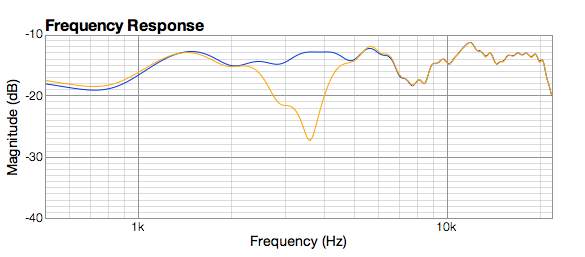Here's something I learned recently that at first glance may seem counter-intuitive.
Somehow, during a series of experiments, I had inadvertently set my tweeter high pass filter at the wrong value. The final crossover point was supposed to be 4200 Hz, but I had the tweeter set to 3000 Hz. You may at first think that would mean more output in that 3000-4200 Hz range... not so.
In the plot below, the
orange line is with the tweeter set at 3000 Hz, and the
blue line with it set correctly at 4200 Hz. (The mid is highpassed at 4200 Hz, both are LR8 slopes. Ignore the 8 kHz dip, that is a different issue - a "baffle" cancellation effect on the tweeter.)
So not only is the tweeter working harder, but there is less treble output as well....
Doh

